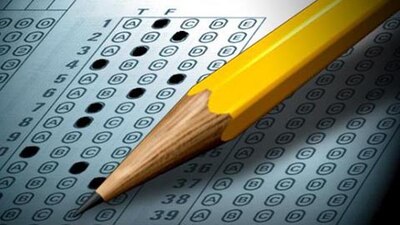The state’s round two Race to the Top application sets high goals for improving test scores, graduation rates and college attendance over the next five years, an ambition that raised a few questions at Thursday’s State Board of Education meeting.

Among the goals, the application promises Colorado will raise CSAP reading scores 16.7 percent by 2014, from 68.3 percent of students scoring proficient or above in 2009 to 85 percent in 2014. The percentage of proficient or higher increased only 2 percent from 2003 to 2009.
The goal for CSAP math scores also is 85 percent proficient or above by 2014, a 30.5 percent increase from 2009’s figure of 54.5 percent. The percentage of students scoring proficient or higher rose 3.8 percent from 2005 to 2009.
“Given the small increase … how realistic is this goal?” asked board member Randy DeHoff, R-7th District. He particularly asked about reading, noting that a number of special programs have failed to raise scores substantially in recent years.
“What is it about our Race to the Top proposal” that will achieve those gains? DeHoff asked.
Dianne Lefly of the Department of Education’s standards and assessments office noted that the state’s content standards and tests will be changing in the next few years.
“That’s a scary answer because the obvious conclusion [to some] is that you’re lowering the standards,” DeHoff said.
Education Commissioner Dwight Jones said the situation is more complex and that the combination of previously approved Colorado education reforms and R2T funding make it possible to achieve the ambitious goals.
“There are a lot of key initiatives going forward” that support the goals, Jones said, referring to the standards and testing upgrades required by the 2008 Colorado Achievement Plan for kids and the school district accountability and support reforms approved in 2009.
“There’s a variety of things that are happening … we’re really starting to get our arms around this,” Jones said. He also noted that the new content standards, which have been adopted but will be phased in starting in 2011-12 school year, are more rigorous than the existing ones.

Jones said that winning a R2T grant will allow the state “to get a lot more intentional and focused” about reform and about raising test scores.
Nina Lopez, department stimulus coordinator, agreed, saying, “What Race to the Top does is accelerate the policy framework that already exists.”
The commissioner also said that the department has become more focused on helping school districts than it may have been in the past. For instance, Jones said, there are known techniques for improving student literacy “but we have been sporadic about doing it.”
Board member Angelika Schroeder, D-2nd District, noted that the current CSAPs will have been replaced by 2015 and wondered how the switchover will affect the state’s calculation of progress.
“We will continue to have strong accountability,” Jones said, adding that any new testing system will continue to measure reading and math achievement. “I think we’ll be able to make that correlation” between the old and new testing systems.
Colorado’s R2T application also sets improvement goals for the National Assessment of Educational Progress tests. Those include raising 4th grade math proficiency from 45 to 55 percent, 4th grade reading proficiency from 40 to 60 percent, 8th grade math proficiency from 40 to 60 percent and 8th grade reading proficiency from 32 to 52 percent.
Lefly said those goals were chosen to match scores in Massachusetts, which has the nation’s highest NAEP scores. “If you want to be the best you ought to compare yourselves with the best.”
Identical NAEP tests in various subjects are given every two years to samples of students in every state. About 3,000 Colorado students take the tests. Lefly noted that while a proficient CSAP score means a student is performing at grade level, proficient means above grade level on NAEP tests.
Do your homework
